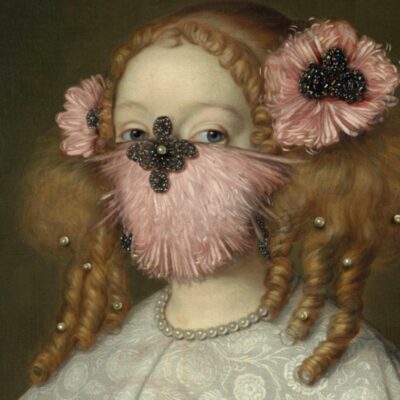
Exhibitions 13.06.2022
05.10.2017
collaborationscontemporary fashionFrench fashion
Sharing experiences in fashion
Martin Margiela is a one-of-a-kind fashion designer. His fashion is regarded to be conceptual, producing clothes that are the sublimated result of a reflection on the very materiality of items, their appearance and construction: an intellectual gesture, a sophisticated reflection, a quasi-scientific reinterpretation of the past. At a very superficial glance, it comes as a surprise that his first apprenticeship was at Jean Paul Gaultier, but looking closer, it is possible to grasp the connections between these two designers, and their only apparently distant takes on fashion.
Martin Margiela graduated from the Royal Academy of Fine Arts in Antwerp in 1979. In 1984 he moved to Paris to work as a design assistant to Jean Paul Gaultier. The legend goes that Margiela sat in Gaultier’s office waiting room for days, before being introduced to Gaultier himself. Margiela was so determined in working for the enfant terrible of French fashion probably because he believed he could learn something he couldn’t get in Antwerp. He stayed with Gaultier for three years, before setting up his own label ‘Maison Martin Margiela’ and shocking the fashion world with his first collection in 1989. Later, Gaultier said: ‘I knew he could do something great, but I did’n know to which extent.’
Even though very different in the appearance, Gaultier’s and Margiela’s works are similar in the obsession they show for the body, which is always the starting point of their production: for Gaultier, the body is something that has to be enhanced, celebrated, displayed; while Margiela’s sensibility leans towards concealing the body, changing its forms and negating its identity.
Margiela and Gaultier show a similar approach also in the way they consider the fashion show: even though with very different techniques and evoking distinct atmospheres, a common thread can be perceived in the level of reflection they put in their shows, often turning them in real happenings.
In a recent documentary on the Belgian designer, Gaultier declared that he doesn’t consider himself to be Margiela’s teacher, because he didn’t need one. However, his apprenticeship at Gaultier proves to be very important to understand a bit more Margiela’s creations, whose meaning is often considered very difficult to grasp.